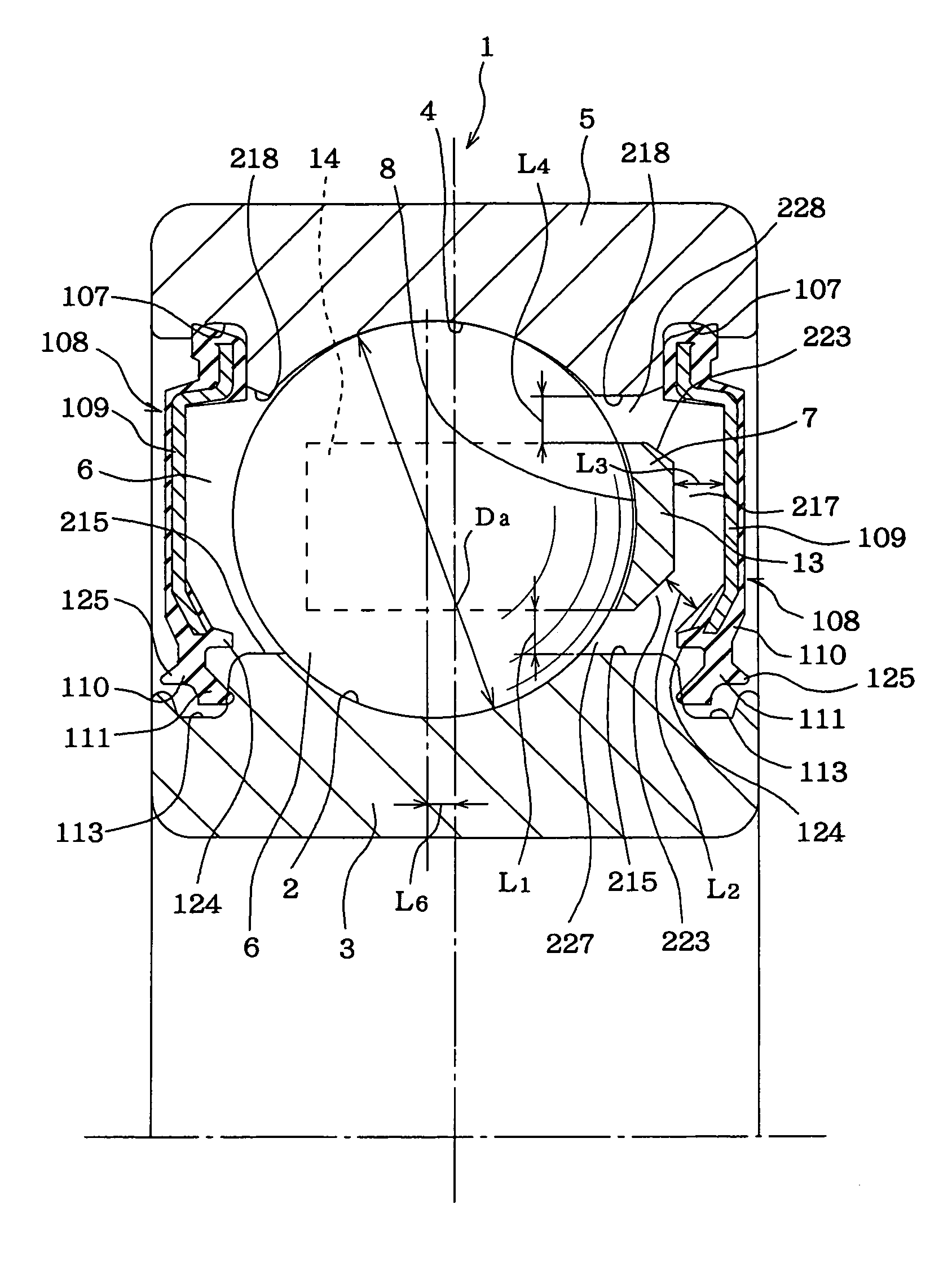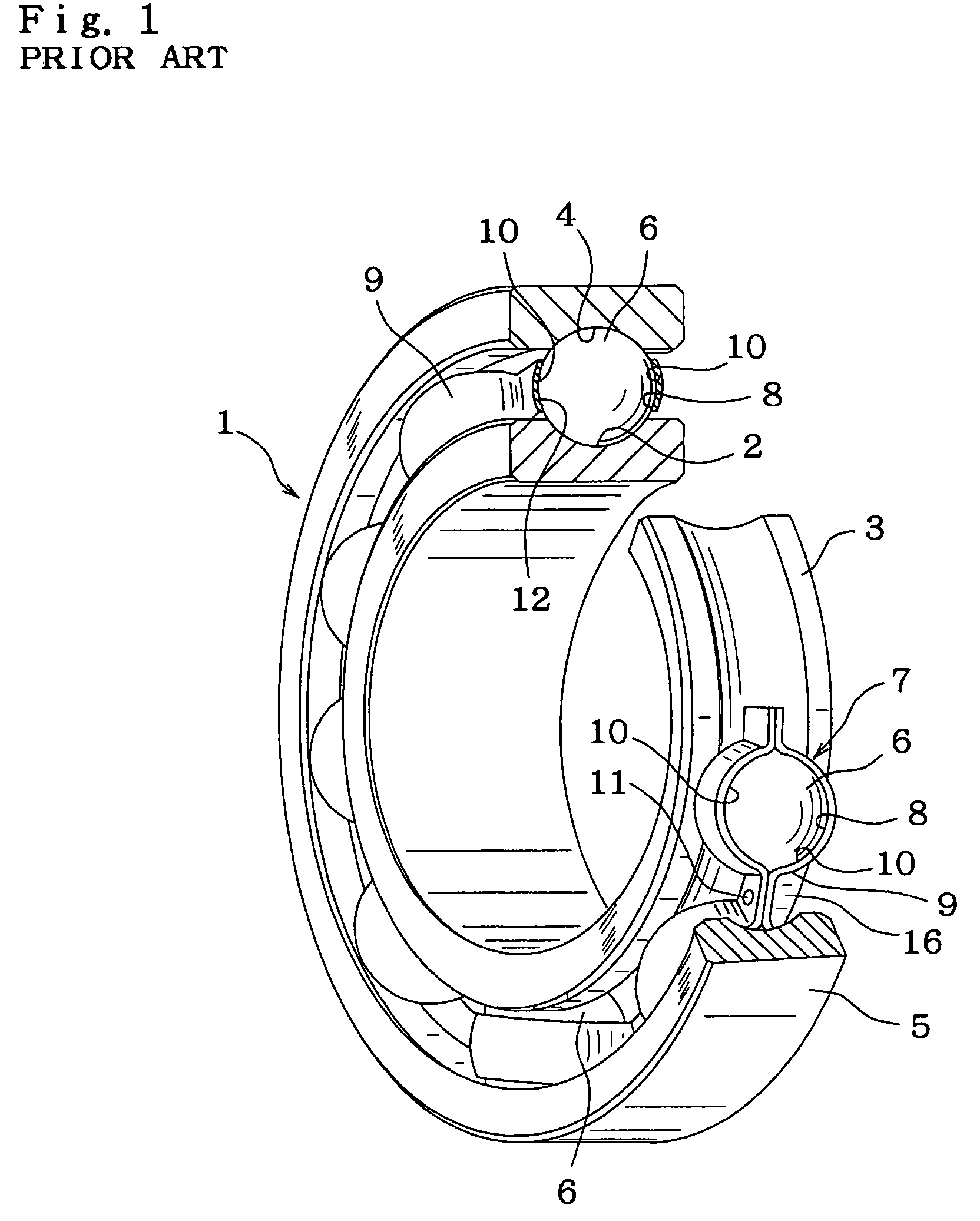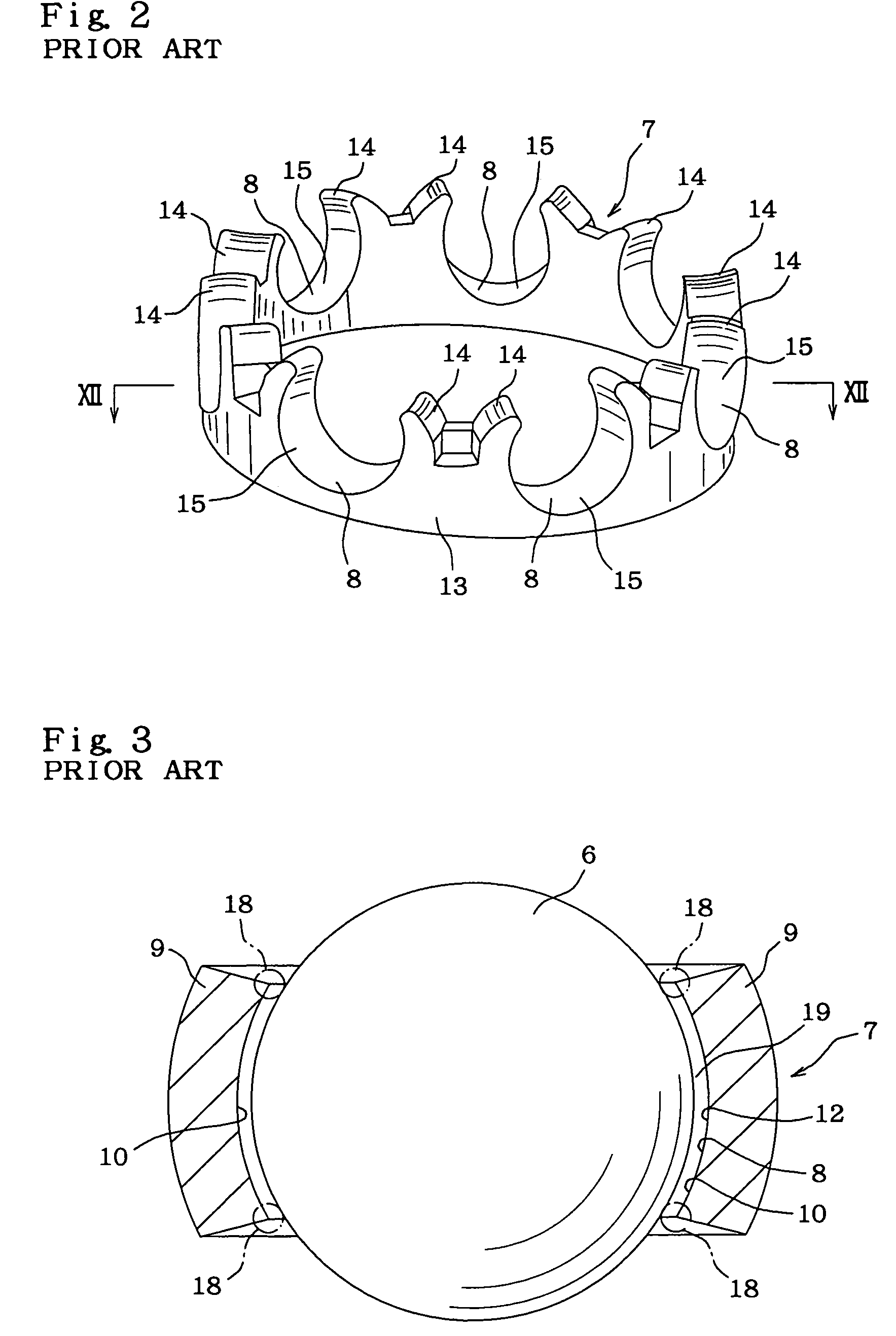Ball Bearing
a retainer and ball bearing technology, applied in the direction of bearings, shafts and bearings, rotary machine parts, etc., can solve the problems of abnormal wear or seizure, large amount of grease, and difficult to leak out the grease that adheres to the inner peripheral surface of the retainer, so as to prevent harmful noise and prevent the leakage of grease inside the ball bearing
- Summary
- Abstract
- Description
- Claims
- Application Information
AI Technical Summary
Benefits of technology
Problems solved by technology
Method used
Image
Examples
eleventh embodiment
[0150]Next, a twelfth example of the embodiment of the invention is shown in FIGS. 39 and 40. In this example, a dust seal lip 125 is formed on the outside of the seal lip 111 on the inner peripheral edge of the elastic member 110 of the seal plate 108 to protrude in the axial direction from the inner peripheral section on the outer surface of the seal lip 111 such that it covers the outside of the outer half of the opening of the seal groove 113. Except that the shape of the dust lip 125 is different and that the shape of the seal lip 111 is a little different to match it, the construction and functions of this embodiment are nearly the same as those of the eleventh embodiment described above.
[0151]A experimental test performed by the inventors to confirm the effect of the invention is explained below. In this test, the following examples were used under identical conditions, and the rate of grease leakage and the amount of water seepage were measured for comparison;
[0152]a convent...
example i
[0154 of the rolling bearing of this invention with the seal plate 108 shown in FIGS. 37 to 38 installed therein, and
example ii
[0155 of the rolling bearing of this invention with the seal plate 108 shown in FIGS. 39 and 40 installed therein.
[0156]The dimensions of the conventional example, Comparative Example I, Example I and Example II are shown in Table 1, and the measurement results for the grease leakage rate are shown in FIG. 41, and the measurement results for the water seepage are shown in FIG. 42.
[0157]The test was performed on eight samples of like example for measuring the grease leakage rate, for a total of 32 samples, and on four samples of like example for measuring the amount of water seepage, for a total of 16 samples.
[0158]
TABLE 1ConventionalComparativeExampleExampleExampleExample IIIIInterference L0.26 mm0.08 mm0.13 mm0.13 mmRate of3.3%1.0%1.6%1.6%InterferenceL toBallDiameterduring halt2.3 N / mm10.4 N / mm4.6 N / mm4.4 N / mmP / L(230 gf / mm)(1060 gf / mm)(470 gf / mm)(450gf / mm)during-2.6 N / mm11.4 N / mm5.0 N / mm4.9 N / mmoperation(270 gf / mm)(1160 gf / mm)(510 gf / mm)(500gf / mm)αabout 9.5°about 40°about 36°about ...
PUM
 Login to View More
Login to View More Abstract
Description
Claims
Application Information
 Login to View More
Login to View More - R&D
- Intellectual Property
- Life Sciences
- Materials
- Tech Scout
- Unparalleled Data Quality
- Higher Quality Content
- 60% Fewer Hallucinations
Browse by: Latest US Patents, China's latest patents, Technical Efficacy Thesaurus, Application Domain, Technology Topic, Popular Technical Reports.
© 2025 PatSnap. All rights reserved.Legal|Privacy policy|Modern Slavery Act Transparency Statement|Sitemap|About US| Contact US: help@patsnap.com



